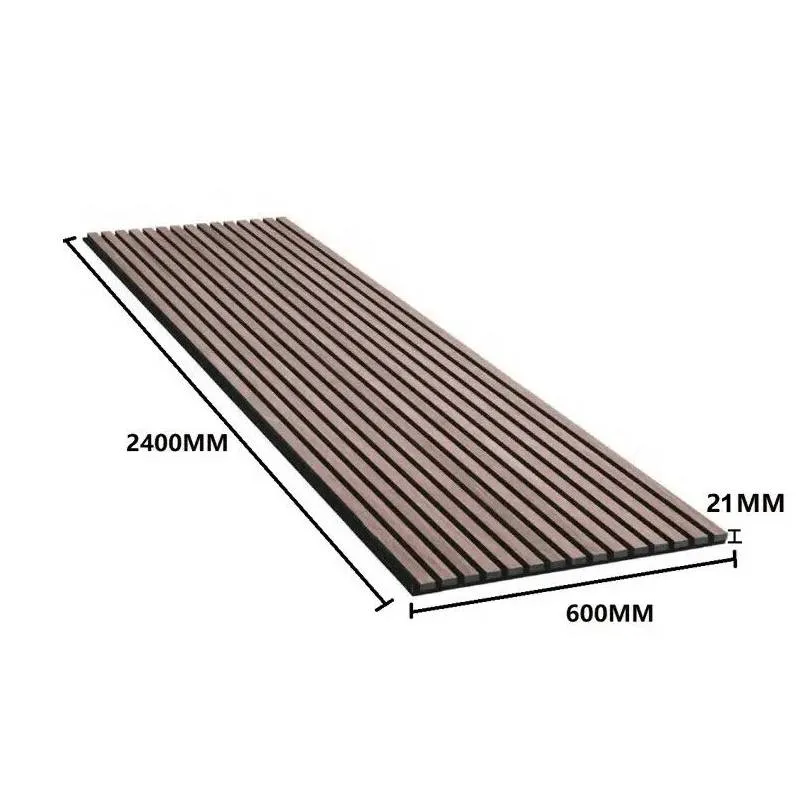The Benefits and Aesthetics of Acoustic Wood Panels
In the world of interior design and architecture, the quest for both style and functionality is an ongoing challenge. One solution that has gained significant popularity in recent years is the use of acoustic wood panels. These innovative solutions not only enhance the aesthetic appeal of a space but also significantly improve its acoustic properties. This article explores the multifaceted benefits of acoustic wood panels, highlighting why they are an essential addition to modern interiors.
Understanding Acoustic Wood Panels
Acoustic wood panels are specially designed architectural products that combine wood's natural beauty with acoustic absorption capabilities. They are constructed from various types of wood, including oak, walnut, and bamboo, providing a range of design options that suit different tastes and decor styles. These panels can be installed on walls or ceilings, effectively transforming a space into one that is not only visually appealing but also acoustically optimized.
Sound Absorption
One of the primary functions of acoustic wood panels is sound absorption. In many environments, such as offices, schools, restaurants, and homes, excessive noise can lead to disturbances and distractions. Acoustic wood panels are engineered to absorb sound waves, minimizing echoes and enhancing speech clarity. This makes them ideal for open-plan offices or bustling cafes, where background noise can disrupt conversations and reduce productivity. By implementing these panels, businesses and homeowners can create a more serene atmosphere that fosters communication and collaboration.
Aesthetic Appeal
acoustic wood panels

Beyond their functional benefits, acoustic wood panels also bring an unmistakable warmth and elegance to any space. The natural grain patterns and textures of wood can complement a variety of styles, from rustic and traditional to modern and minimalist. With a wide range of finishes available, including stained, brushed, or painted options, designers can customize these panels to align perfectly with the overall design theme of a room. The combination of form and function ensures that spaces feel inviting and stylish, making acoustic wood panels a favored choice among interior designers.
Sustainability
In today's eco-conscious world, the choice of materials used in design plays a significant role. Many acoustic wood panels are made from sustainably sourced wood, contributing to environmentally-friendly building practices. By choosing products certified by organizations such as the Forest Stewardship Council (FSC), designers and consumers can ensure that they are making responsible choices that do not contribute to deforestation. Furthermore, wood is a renewable resource, which means that it has a lower environmental impact compared to many other building materials.
Versatility
Acoustic wood panels are versatile and can be used in various settings. Whether it's a home theater, a corporate boardroom, a concert hall, or a public gallery, these panels can adapt to the unique acoustic requirements of each space. They can also be combined with other acoustic treatments, such as soundproofing insulation and carpets, to create an even more effective sound management system. This adaptability makes acoustic wood panels a smart investment for architects and designers looking to tackle the diverse acoustic challenges present in modern building projects.
Conclusion
In conclusion, acoustic wood panels represent an intersection of practicality and beauty in interior design. Their ability to enhance acoustic performance while adding aesthetic value makes them a desirable choice for various applications. As more individuals and organizations strive for serene and productive spaces, the popularity of acoustic wood panels is likely to continue growing, solidifying their place as a staple in modern architecture and design. Whether you are redecorating your home or designing a commercial space, acoustic wood panels offer a solution that meets both your functional and aesthetic needs.
